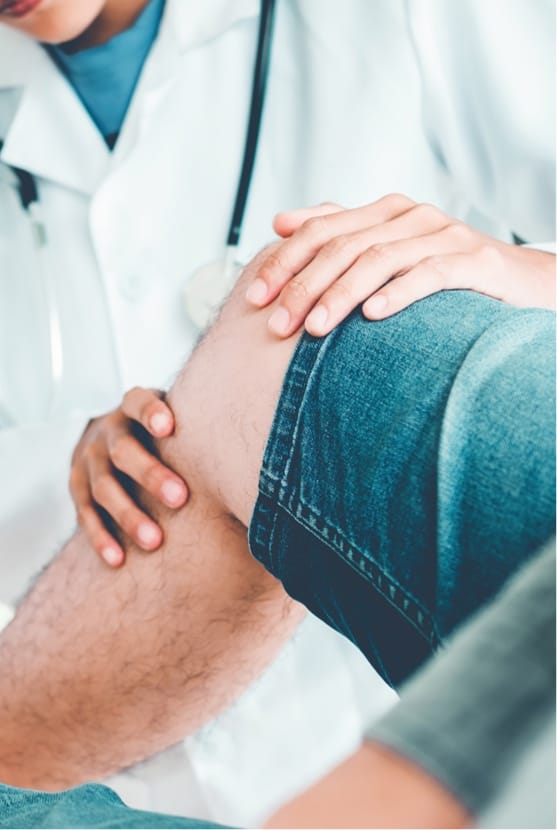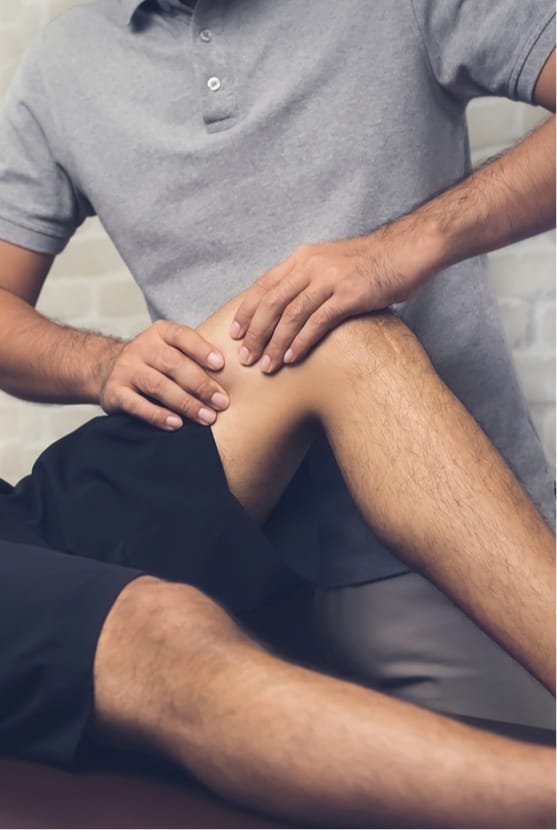What are knee ligament tears (sprains)?
Ligaments are bands of connective tissue that hold the bones of a joint together. A tear (sprain) happens when the knee twists, is forced out of position, or otherwise injured.
What are the most commonly injured knee ligaments?
- ACL (Anterior Cruciate Ligament) – most common
- PCL (Posterior Cruciate Ligament) – less common (often due to more severe trauma)
- MCL (Medial Collateral Ligament)
- LCL (Lateral Collateral Ligament)
What symptoms indicate a ligament tear?
Sudden severe pain at the time of injury, a popping sound, swelling within the first 24 hours, feeling of looseness or instability in the knee, and difficulty bearing weight.
How are knee ligament tears treated non-surgically?
Options include biologic injections (stem cell therapy, bone marrow concentrate, PRP), bracing if needed, and physical therapy to strengthen muscles around the knee and reduce stress on the injured ligaments.
When is surgical intervention needed?
If there’s severe instability, large tears, or when non-surgical therapies fail; surgery may also be recommended depending on the patient’s activity level, age, goals, and degree of injury.
How can I reduce the risk of future ligament injury?
Warm up properly before intense activity, stretch and strengthen thigh muscles, maintain flexibility, and avoid sudden increases in workload or activity intensity.



